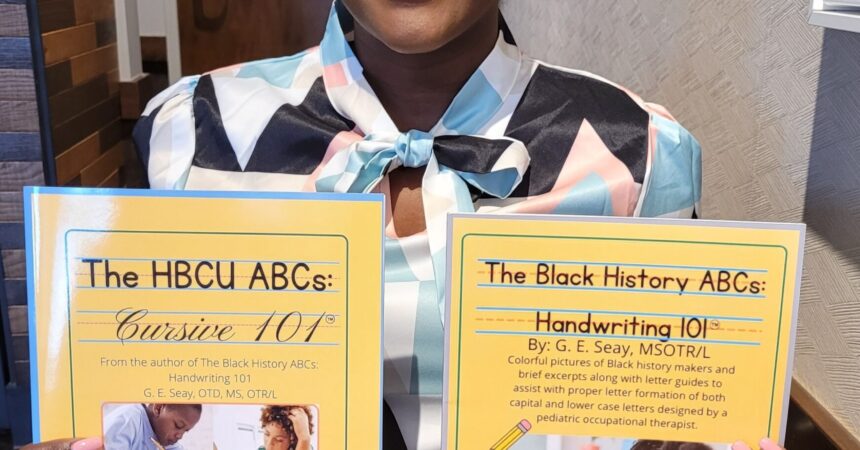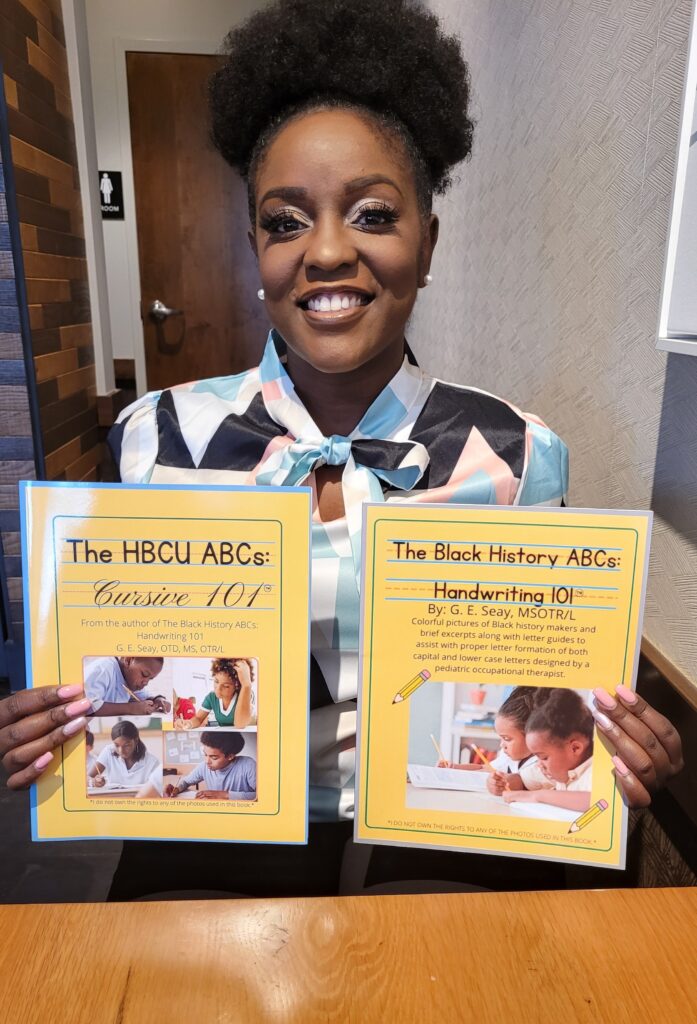
Books with Black history theme taking Seay on a nation-wide journey

Photo by St. Clair Murraine
By St. Clair Murraine
Outlook Staff Writer
Ebony Seay is finding out something she didn’t realize would be possible before two books she wrote started getting national attention.
“It’s so much bigger than I thought it would be,” said Seay, a FAMU grad who attended Rickards High School and still lives in Tallahassee.
Consider that she has been featured on the Kelly Clarkson television show. She’s also been getting calls from educators around the country, some from as far away as California. Locally she has spoken before the 220 Quarterback Club, as well as made headlines in broadcast and print media.
The books titled “The HBCU ABCs: Cursive 101” and “The Black History ABCs: Handwriting 101” are available on Amazon.
Seay, who earned two degrees from FAMU between 2008 and 2014, was pretty content with her career as a certified occupational therapist. At the time last fall when she published the books, she was in the Ph.D. program at Eastern Kentucky University and has since earned a doctorate degree in occupational therapy.
She seemed to be doing just fine. Then, she got a call from a friend whose child was struggling with cursive writing. She was told one of the child’s challenges was being left-handed.
Seay recalled the days when she made herself learn to do cursive writing with her left hand. Between that and the first-hand knowledge about how some children struggle with writing, Seay came up with the concept of using the alphabets to teach children how to write.
She also used an added touch of blue and red lines, which she recalled from her elementary school days, as a guide. Stars and numbers show how to begin forming letters.
“They have to see where to start because they are still learning about forming and depth perception and all of that – also of the skills that it takes to learn how to write,” she said. “The different colors give a clue how to do things.
“I kind of just came up with the idea; okay, they need help with forming their letters. I thought I would do two for one and put the Black history part in because they don’t know that either.”
At the same time, she also decided to make it a Black history project with the second book, using Historically Black Colleges and Universities to represent each letter of the ABCs.
But there was no HBCU in the country to represent the letter “Z.” She found Zimbabwe Open University through a search for HBCU’s in Africa.
Focusing on children with the books puts Seay in her wheelhouse. She was already working with kids in neonatal intensive care and up to age 3.
But as much as her books are catching on, Seay is finding that her work could be caught in the cross fire over how history is taught. Across the country lawmakers are coming up with measures to narrow how history is presented in the classroom.
In Florida, the State Board of Education approved a rule that said in part that teachers “may not define American history as something other than the creation of a new nation based largely on universal principles stated in the Declaration of Independence.”
Reminded that the rule, which as better known as critical race theory, has led to some Black history books being banned, Seay said she isn’t worried.
“If (Black history) didn’t mean anything no one would care so it obviously means something,” she said. “The more you know, the more education someone has. History is what it is and it can’t be changed.”
Meanwhile, Leon County School Board Chairman Darryl Jones applauded Seay’s effort.
“This author and her work could not be more timely, as there are assaults against the facts of the American experience,” Jones said. “This author provides appropriate context for the African American experience for our youngest learners.
“What makes this work so important is that once they know this truth, it is my hope that it can never be unlearned.”
While the critical race theory question continues, Seay said she isn’t sure she’d write another book. She insisted it’s not about the fuss over what’s taught in the classroom.
“This can go so many different ways,” she said. “I don’t know yet.”







